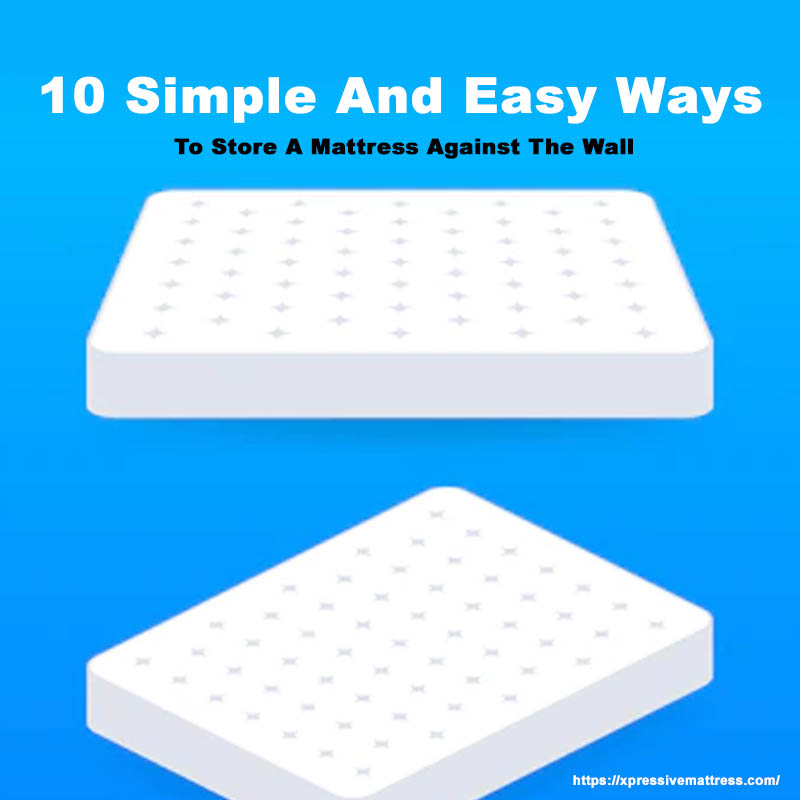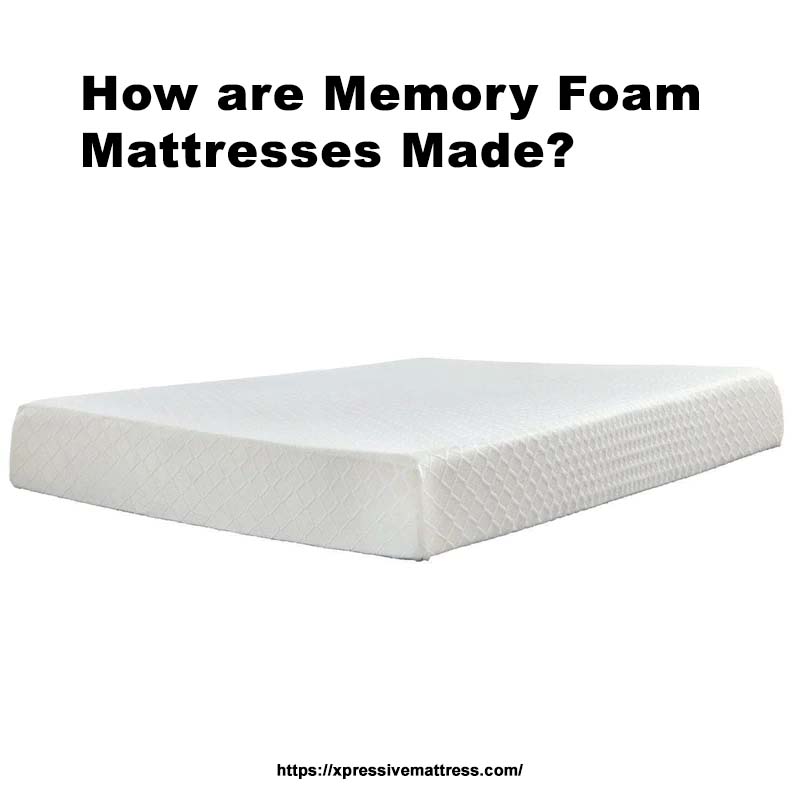Stains on mattresses can be a real nuisance.
They look unsightly and make your mattress less comfortable and inviting to sleep in.
Fortunately, there are several ways to prevent staining or remove existing stains from your mattress so that it looks new again!
Here’s how:
- Use protective covers – Investing in waterproof or stain-resistant bedding is the best way to protect against spills and other accidents.
- Spot clean immediately – If something does spill onto the surface of your mattress, act quickly by blotting up as much liquid as possible with an absorbent cloth before applying the cleaning solution.
- Regular vacuuming helps keep dust mites away while removing dirt particles that could cause discoloration over time.
- Avoid direct sunlight exposure – Sunlight will fade fabrics faster than normal wear, and tear would otherwise do.
TakingTaking these steps should help stop any further staining on our mattresses for good!
What Causes Stains On Mattresses?
A variety of things cause stains on mattresses.
These include sweat, body oils, food and drink spills, pet accidents, or urine stains from children.
Sweat is one of the most common causes.
It can accumulate over time if not cleaned properly with an appropriate mattress cleaner.
Body oils also contribute to staining as they mix with dust particles in the air that settle onto your bedding and eventually into your mattress fabric fibers, causing discoloration.
Food and drinks spilled directly onto the surface will cause immediate staining unless wiped up quickly before it has had a chance to soak through deeper layers within the material itself – this includes crumbs left behind after eating in bed!
Pet accidents such as vomit or diarrhea may leave permanent marks depending on how long they have been sitting there without treatment.
Finally, young children who still wear diapers at night often suffer from nighttime urination.
Again, use specific stain removers here too! They can lead to unsightly yellowish patches appearing across their beds.
That’s due to prolonged exposure without proper treatment/cleaning methods applied soon enough afterward.
How To Protect Your Mattress From Stains?
Protecting your mattress from stains is important for keeping it looking and feeling new.
Here are some tips to help you keep your mattress clean:
- Use a waterproof or stain-resistant cover on the top of the mattress.
- This will protect against spills, sweat, pet accidents, and other liquids that can cause staining.
- Vacuum regularly using an upholstery attachment helps remove dust mites and dirt particles, which can accumulate over time, causing discoloration in fabric mattresses and damage to foam ones if left unchecked!
- Spot treat any visible spots with a mild detergent mixed into warm water before they set in permanently. Blotting gently rather than rubbing harshly to avoid spreading them further across the surface area being treated (avoid harsh chemicals).
- Rotate/flip periodically according to manufacturer instructions. Doing so ensures even wear and tear throughout the lifespan while helping prevent sagging due to too much weight concentrated at one end or side of bedding material(s).
- Avoid eating directly on top of bedding materials such as sheets and blankets. Instead, use trays and tables when necessary – it prevents crumbs.
How To Remove Stains From Mattress?
Removing stains from a mattress can be tricky, but it’s not impossible.
Here are some tips to help you get the job done:
- Start by vacuuming your mattress with an upholstery attachment. It will remove any dirt and debris that may have accumulated over time.
- If there is still a stain after vacuuming, try using baking soda or cornstarch as natural absorbents for liquid spills.
- Sprinkle either one on top of the stained area and let sit overnight before brushing it off in the morning.
- For tougher stains like blood or ink, mix equal parts white vinegar and water into a spray bottle, then spritz onto affected areas until dampened (not soaked).
- Let stand for 10 minutes before blotting dry with paper towels or cloths – repeat if necessary!
- Finally, use hydrogen peroxide mixed at 1 part solution to 3 parts warm water ratio directly onto stubborn spots such as grease marks from food items like pizza sauce.
- Leave on for 15-20 mins, then rinse away thoroughly afterward, so no residue remains visible!
How To Maintain Mattress To Avoid Stains?
Maintaining your mattress is important to avoid stains.
Here are some tips on how you can do this:
Use a waterproof cover or protector.
This will help keep liquids from seeping into the mattress and causing permanent damage.
Vacuum regularly
Vacuuming helps remove dust, dirt, pet hair, and other debris that could cause staining over time.
Spot clean spills immediately.
If an accident involves liquid (such as spilled coffee), use a damp cloth with mild detergent to spot-clean it immediately before it has time to set in permanently! Make sure not to scrub too hard, though. Gentle blotting should be enough for most messes.
Rotate/flip periodically.
Flipping or rotating your mattress every few months ensures even wear. No side gets stained more than another due to prolonged contact with body oils and sweat particles, which accumulate over time if left untouched.
Avoid eating in bed.
Eating food while lying down increases the chances of spilling something onto your mattress’s surface, which may eventually lead to stain formation.
Keep pets off furniture.
Pet fur and dander can also contribute to discoloration and stains. hence, keeping them off beds altogether is best avoided!
Common Household Products That Can Remove Mattress Stains
Common household products can be used to remove mattress stains.
For example, baking soda is a great option for removing odors and lightening the stain.
Sprinkle it on the affected area and let it sit overnight before vacuuming in the morning.
White vinegar also works well as an all-purpose cleaner. mix one part white vinegar with two parts water, spray onto stained areas of your mattress, and then blot dry using paper towels or a clean cloth.
Hydrogen peroxide is another effective solution that helps break down tough stains like blood or urine.
Apply directly to the spot until saturated, then rinse off after 10 minutes with cold water.
Finally, dish soap mixed with warm water makes an excellent cleaning agent when scrubbed into stubborn spots. use gentle circular motions while applying pressure so you don’t damage fabric fibers!
The Importance Of Cleaning Mattress Regularly To Prevent Stains
Cleaning your mattress regularly is essential to prevent stains and keep it looking new.
Here are some important reasons why:
- Stains can be difficult or impossible to remove if left for too long, so regular cleaning will help you avoid this problem.
- Regularly vacuuming your mattress’s surface helps eliminate dust mites that may cause allergies.
- Cleaning also removes sweat, body oils, and other liquids which could otherwise seep into the fabric over time, causing discoloration or odors.
- It’s a good idea to use an upholstery cleaner specifically designed for mattresses to ensure all dirt particles are removed without damaging any fabrics. Examples include steam cleaners, dry-cleaning solvents, and enzyme-based products.
- Finally, remember that prevention is key – using protective covers on both sides of your mattress can go a long way toward keeping it clean!
In Conclusion: How To Stop Mattress From Staining?
To conclude, it is important to take the necessary steps to prevent mattress staining.
This includes: regularly vacuuming and rotating your mattress.
using a waterproof or stain-resistant protector on top of your bedding.
spot cleaning any spills immediately with cold water and mild detergent.
avoiding eating/drinking directly on the bed surface as much as possible.
With these simple tips, you can keep your mattress looking new for years!
Taking care of our mattresses should be essential to maintaining good hygiene habits.
After all, we spend so many hours sleeping every night that having clean sheets makes us feel more comfortable and relaxed when going to sleep.
How To Make Your Mattress? Tips and Strategies
Making your mattress is a great way to save money and get the perfect sleep experience.
It’s not as hard as you might think!
With some basic materials, tools, and know-how, anyone can make their custom mattress:
- Choose from different types of foam or latex for comfort.
- Select fabrics that match your style.
- Add layers of padding for extra support.
Plus, you have complete control over the size and shape of DIY mattresses. So it fits perfectly in any bedroom space!
Making your mattress gives you an unbeatable combination of quality craftsmanship at an affordable price.
What Materials Are Needed To Make A Mattress?
Making a mattress requires several materials.
- It would help if you had foam or springs for the core of your mattress. These provide support and comfort.
- Fabric is needed to cover the top and sides of your mattress. This can be cotton, wool, or synthetic material like polyester.
- Batting (or wadding) should also be used as an extra layer between the core and outer fabrics – it helps keep everything in place while providing additional cushioning.
- Finally, edging tape may be required around all four edges to make a neat finish. Usually made from nylon webbing with Velcro fastenings on each end so that it’s easy to attach securely onto any size bed frame without having to sew anything together!
All these components are essential when making a quality, comfortable mattress that will last many years if cared for properly.
What Is The Best Type Of Foam To Use For Mattress Making?
When it comes to mattress making, foam is the most popular choice.
There are several types of foam available for this purpose, and each has its advantages:
- Memory Foam – This foam conforms to your body shape, providing excellent support while relieving pressure points.
- Latex Foam – Offers superior breathability and a natural bounce-back effect that helps keep you comfortable all night long.
- Polyurethane Foam (PUF) – Provides good cushioning with minimal motion transfer between partners in bed.
- It’s also highly durable so it can last longer than other foams used in mattresses.
The best type of foam depends on individual needs and preferences.
Still, generally speaking, memory or latex foams offer the highest level of comfort due to their ability to contour around your body shape more effectively than PUF does.
They both provide great temperature regulation, too. That makes them ideal if you tend to get hot during sleep or suffer from allergies/asthma since they don’t trap dust mites as some synthetic materials do!
Additionally, these two options usually come at a higher price than polyurethane, meaning they may not be suitable for affordable solutions.
however, investing in quality will pay off over time regarding durability and longevity!
How Do You Cut And Assemble The Foam For A Mattress?
Cutting and assembling foam for a mattress is not difficult.
Here are the steps:
- Measure your bed frame to determine how much foam you need.
- Cut the foam pieces with an electric knife or saw, ensuring they fit snugly in each corner.
- Place one piece on top of another so their edges line up perfectly.
- Secure them together using adhesive tape or glue along all four sides where they meet.
- Cover both layers with fabric before stitching them into place around the perimeter of each layer.
- 6Add any additional padding, such as memory foam, if desired.
- Finally, assemble everything onto your bed frame by attaching straps at either end to hold it securely in place!
What Steps Are Required To Finish The Mattress?
To finish a mattress, several steps need to be taken.
- The fabric needs to be cut and sewn together to fit properly on the bed frame.
- Foam or other cushioning material should then be added between layers of batting to provide comfort when lying down.
- Springs or coils must also be installed inside each layer before being covered with another piece of fabric which will act as an outer shell for protection against dust mites and allergens.
- All edges should have binding tape applied to ensure they stay secure over time. That’s while providing additional support where needed most during sleep sessions!
What Tools Do You Need To Make Your Mattress?
To make your mattress, you’ll need a few tools.
- Foam for the core of your mattress. This can be either memory foam or latex.
- You will also need fabric to cover it with – cotton works best as it’s breathable and comfortable against the skin.
- Additionally, you may want some batting material, such as wool or polyester fiberfill, to add extra cushioning to the foam layer(s).
Finally, if desired, an upholstery machine (or hand-stitching) could help secure all layers together in one neat package!
Here are some other items that might come in handy:
- Tape measure
- Scissors/rotary cutter and cutting mat
- Sewing pins and needles
- Upholstery thread
- Iron and iron board
- Staple gun
- Foam saw
- Spray adhesive
How Long Does It Take To Make A Mattress?
Making a mattress is not an easy task.
Creating the perfect sleeping surface takes time, effort, and skill!
Here’s what goes into making one:
Choosing materials
The type of material used in your mattress will determine its comfort level, durability, and price point. Commonly used materials include memory foam, latex foam, or pocket springs.
Cutting and Sewing
Once the right combination of layers has been chosen, it’s time to cut them out according to size specifications before sewn together with industrial machines.
Upholstery
This step involves adding fabric covers that protect against dust mites and provide additional cushioning on top of the core structure.
Testing
Quality control tests must be done at each stage during the production process, including testing for flammability standards set by law.
Packaging
Mattresses need special packaging to reach their destination safely without any damage caused due to transportation.
Creating a custom-made mattress usually takes around 4 weeks from start to finish.
but this may vary depending on the complexity involved in the design and quality assurance processes required along the way.
What Are The Pros And Cons Of Making Your Own Mattress?
Making your mattress has both pros and cons.
Pros include cost savings, customization options, and satisfaction with a job well done.
Cons include time commitment to complete the project and the potential for mistakes or errors in construction that could lead to an uncomfortable sleep surface.
Cost Savings
Making your mattress can save you money compared with buying one from a store or online retailer.
You will need fewer materials than purchasing pre-made mattresses, which means less expensive overall.
Additionally, since it is made by hand, there are no additional costs associated with shipping fees or taxes on top of what would be paid at retail stores/online retailers when making purchases directly from them instead of building yourself!
Customization Options
When creating something as personal as a bedding item like this, one should have plenty of choices available to ensure their needs are met exactly how they want them to be!
With DIY projects such as these, one’s imagination comes into play, allowing for unique designs tailored specifically towards individual preferences without having any limitations imposed upon oneself due to limited selection offered elsewhere (i.e., mass-produced products).
Time Commitment
Building anything takes dedication and patience but especially true when constructing items meant for sleeping purposes because comfort levels must meet certain standards before being deemed suitable enough to use regularly over long periods without causing discomfort during restful hours spent lying down atop said surfaces created through laborious efforts put forth beforehand!
This process may take longer than expected.
That depends on the skill level involved while requiring more attention to detail throughout the process.
Potential For Mistakes Or Errors In Construction That Could Lead To An Uncomfortable Sleep Surface.
As mentioned above, crafting beds requires precision and accuracy to ensure a comfortable night’s slumber is achieved each evening after tucking yourself away beneath sheets and blankets across a newly constructed resting place!
Unfortunately, even most experienced builders run the risk of issues along the way, either caused by lack of knowledge, inexperience leading to incorrect measurements, and wrong pieces used or incorrectly assembled.
Thus rendering the finished product unusable for those seeking peaceful repose within its confines afterward.
Conclusion: How To Make Your Mattress?
Making your mattress is a great way to save money and get the perfect sleep experience.
It’s not as hard or expensive as you might think, with many materials available at local stores for reasonable prices.
You can choose from foam, latex, wool batting, and more, depending on what comfort level you’re looking for in your bedding.
With some basic tools like scissors and an electric drill plus patience, it’s possible to make a comfortable custom-made mattress that will last years!
In conclusion, making your mattress is worth considering if you want something unique without breaking the bank.
Just do plenty of research beforehand, so everything goes smoothly during construction!



